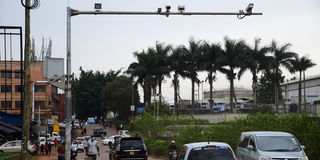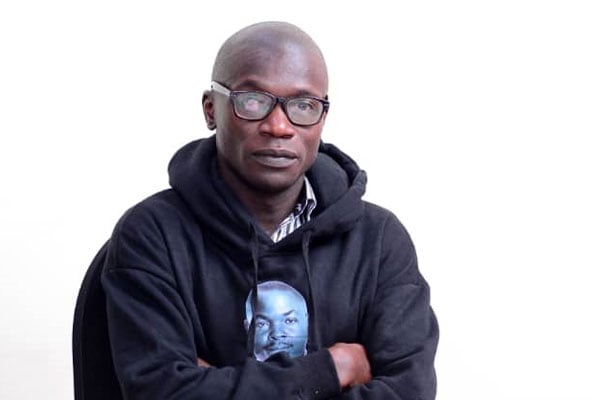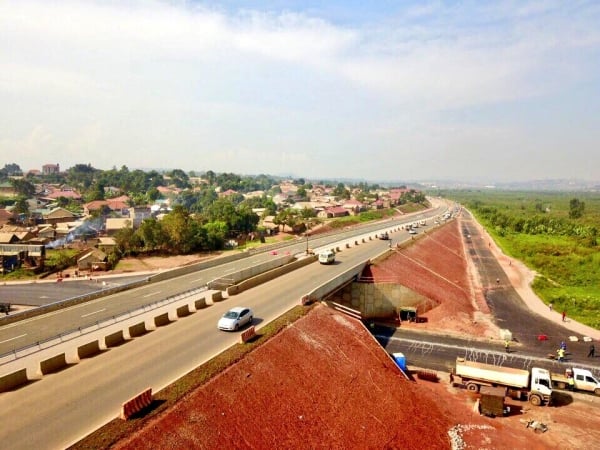Prime
Police to connect into private CCTV cameras

CCTV cameras mounted at a section of Eight Street, Industrial Area, Kampala. At least 5,709 CCTV cameras were installed at 2,027 camera sites across the country in 2018. PHOTO/ ABUBAKER LUBOWA
What you need to know:
- Police authorities say this is in order to increase the camera density, but also “government does not have enough funding to put cameras in every corner and junction”.
The government is in the latter stages of embarking on a third phase of the National CCTV Network Expansion Project with the end goal of strengthening the national grid amid a recent spike in security issues.
This publication understands that the third phase of the project will involve the connection of both private and government surveillance cameras to the national grid. The grid will also be augmented by satellite pictures that Mr Yusuf Ssewanyana—the director of Information, Computer and Technology at the Uganda Police Force—believes the undertaking will plug gaps in the national CCTV network that rogue elements have ruthlessly exploited in recent times.
“When people are going to commit a crime, they do what is called reconnaissance because they know that they can be tracked,” Mr Ssewanyana said, adding, “During the third phase, which we are going to embark on, we are looking at bridging that gap.”
Once bitten twice shy?
There are mounting fears over the growing failures of the national CCTV network that saw the government take out a $104 million (Shs376 billion) loan in 2018. Besides being extraordinarily durable, the government promised that the surveillance project would ease the gathering of intelligence. This would in turn unlock crime puzzles that threatened to be fiendishly complex.
The project, coming as it did after 23 women were gruesomely murdered in Entebbe, Katabi, and Nansana across 2017, was welcomed with cautious optimism. After 5,709 CCTV cameras were installed at 2,027 camera sites across the country in 2018, President Museveni was quick to assure Ugandans that the project wouldn’t take long to make an indelible impression.
Four years on, what appears to be a clumsy attempt to electronic monitoring is becoming definite and clear. The country is shorn of surveillance cameras for varying reasons. For instance, 450 CCTV cameras were taken out by road and civil works at selected road sections in Entebbe, Mukono, Kira, Kawempe, Kampala Flyover, Mpigi, Hoima, Kyenjojo, Gulu, Mbale and Kasese.
This has consequently ensured that—just as was the case pre-2018– rogue elements can subject anyone to terror without fear of being apprehended. For instance, Mr Ssewanyana told Saturday that there wasn’t a single camera in the 4.1km stretch from Gen Katumba Wamala’s home to the place in Kisaasi where he was attacked and wounded by yet-to-be-identified gunmen.
Security operatives had to turn to social videos in a bid to get to the bottom of a shooting that claimed the Transport minister’s daughter and driver.
Blind spot
In recent times, the security situation in the country has deteriorated after the Covid-19 pandemic stay-at-home orders occasioned by a period of relative calm. This year, there has been a surge of attacks on security apparatuses.
On July 25, unidentified assailants attacked officers who had mounted a roadblock on Kampala-Gulu Highway. Last month, two officers were stabbed at a roadblock in Kiwumpa Village, Luweero Town Council, before vanishing with two guns. Since then, there have been attacks on Busiika Police Station and Kensington Police Post.
Luweero is no stranger to attacks as on July 24, 2016, an officer attached to Ndejje Police Post was hacked by machete-wielding thugs, who made off with his gun. Mr Ssewanyana described the attack on Busika Police Station as an “isolated case” principally because Busika is slightly over 20km away from Luweero’s main road that’s dotted with 17 cameras.
“The infrastructure that we have now should be used as a national grid for the private cameras to link to our system in order to increase the camera density,” Mr Ssewanyana said, adding, “The government does not have enough funding to put cameras in every corner and junction.”
During a midweek media briefing, Internal Affairs minister Maj Gen Kahinda Otafiire asked Ugandans to cut the national CCTV network some slack. He said while there are “faulty parts in these cameras … that does not mean the entire system is obsolete … there should be no alarm.”

Yusuf Ssewanyana, Police ICT director
Drawing parallels
Alarm, though, has been the typical reaction to the spate of attacks on various security apparatuses across the country. Some observers have even drawn parallels with the guerrilla war that Gen Otafiire participated in back in the 1980s.
It too was staged in Buganda region—led by Yoweri Museveni’s National Resistance Army—with the guerrillas’ first successful raid coming on May 21, 1981, when they stormed Kisoga Police Post at night with no more than stones. They stole seven guns and police uniforms that were added to the four rifles earlier secured after killing government soldiers on patrol on April 13, 1981. On June 3, they stormed Ngogwe Police Post in Buikwe, just after Mukono, and stole 11 guns.
While there are eerie similarities between what the Bush War heroes documented in their memoirs and the current security picture, Gen Otafiire described the recent attacks on security apparatuses in the country as “criminal activity” carried out by “simple criminal gangs.” He further noted that the attacks have “nothing to do with rebellion.”
10-point plan
This runs counter to the narrative that the police’s top brass has repeatedly proffered, blaming the attacks on an obscure rebel outfit called Uganda Forces for Coalition Change. What is clear is the spike in crime whose roots date back to 2002 when Mr Museveni set up a military squad under Elly Kayanja to restore calm.
In 2018, the President laid down a 10-point security plan to combat crime. It included installing surveillance cameras in urban areas and highways, use of police radio calls, recruitment of Local Defence Unit (LDU) personnel, introducing electronic number plates for automobiles and motorcycles, fingerprinting all guns, cleaning up the police Force, prioritising public intelligence, regulating social media, deploying moving drones, as well as banning motorcyclists from wearing hoods.
The scorecard is decidedly mixed. In September 2021, following the killing of Fred Kaggwa in Lyantonde District, suspects were successfully tracked using CCTV that deployed motor vehicle number plate recognition cameras. For the most part though, even by the police’s admission, surveillance cameras haven’t packed a punch.
According to the police crime annual report of 2020-2021, guns from the Uganda Police, Uganda Prisons Service, private security organisations and civilians have been test-fired. Records showed that guns totalling 99 percent with Uganda Prison Services, 84 percent with Uganda Police Force, 81 percent with private security organisations and 38 percent with the civilian population were fingerprinted.
As for the LDUs, while a number of them were deployed, some were withdrawn and sent for public management courses in Kyankwanzi following public complaints of heavy-handedness.
Saturday Monitor tried to establish the fate of the plan to introduce electronic number plates, but Security minister Jim Muhwezi wasn’t readily available. Last July, the government signed a 10-year deal with a Russian security firm (Joint Stock Company Global Security) to install the tracking devices. In March, Parliament called the contract into question on account of absence of a due diligence report.






